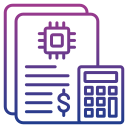
Adapting AI in Business Budgeting Models
Chosen theme: Adapting AI in Business Budgeting Models. Welcome to a practical, inspiring dive into how finance teams evolve from static spreadsheets to learning systems that forecast, explain, and guide decisions with confidence.


Why AI Belongs in Your Budget Strategy Now
A mid-market manufacturer replaced manual consolidations with an AI-driven forecast that consumed sales orders, seasonality, and promotions. Within a quarter, managers debated assumptions rather than cell formulas, and forecast meetings ended earlier, with decisions clearer. Tell us where your spreadsheet slows real decisions—your example could help another reader break through.
Why AI Belongs in Your Budget Strategy Now
Budget conversations often tilt toward optimism or sandbagging. AI models standardize patterns, surface anomalies, and track error consistently by region, customer, or product line. With better signal, leaders negotiate trade-offs on visible facts. How would unbiased variance signals change your next budget round? Share one budget bias you want to challenge.

Data Foundations for AI-Ready Budgets
AI struggles when cost centers and chart-of-accounts are inconsistent across entities. Standardize naming, rollups, and allocation logic, then document rules as data contracts. One controller told us that a single, shared mapping cut reconciliation time in half and unlocked a cleaner training set for their expense forecast pipeline.
Data Foundations for AI-Ready Budgets
Budgets breathe through drivers: headcount, product mix, price changes, seasonality, marketing cadence, and supplier terms. Engineering these features—rather than only raw ledger lines—lets models learn meaningful relationships. Start with three to five proven drivers, then iterate. Comment with a driver you trust most; we’ll compile community favorites.
Time Series with External Signals
Techniques like gradient boosting or temporal fusion transformers can blend internal actuals with exogenous variables: promotions, macro indicators, or commodity prices. The win isn’t only accuracy; it’s seeing which signals truly move the needle. Which external indicator do you suspect drives your top line? Share and compare with peers.
Scenario Simulation and Probabilistic Forecasts
Instead of a single number, probabilistic models provide ranges—p10, p50, p90—helping leaders plan upside and downside actions. Scenario levers make assumptions explicit: price, demand, hiring, and discounts. One retailer used ranges to pre-approve contingency spend, cutting reaction time when demand spiked unexpectedly mid-quarter.
Change Management: Bringing People Along
Avoid jargon. Frame AI as faster close, fewer surprises, and clearer trade-offs. Present side-by-side comparisons with last year’s approach, and highlight real time saved in monthly cycles. If your CFO had one slide to greenlight a pilot, what would it show? Post your outline—we’ll share feedback.
Change Management: Bringing People Along
Offer short workshops on features, drift, and model monitoring tied to real budget lines. When analysts can adjust drivers and interpret outputs, adoption accelerates. One FP&A lead paired a data scientist with a senior analyst for a quarter; both reported learning more in six weeks than in a year of meetings.
Change Management: Bringing People Along
Pick one spend category or a product segment, define baseline accuracy and cycle time, run the pilot, and publish results. Celebrate quick wins publicly. Invite your team to nominate the next area for AI uplift—drop your suggestion in the comments and we’ll prioritize upcoming deep dives.
Risk, Governance, and Ethical Guardrails
Document assumptions, validation protocols, and retraining cadence. Track data drift, performance decay, and exception handling. Establish approval gates for model changes around planning deadlines. When governance is routine, FP&A teams stop fearing the black box and start trusting the tool as part of their monthly rhythm.

Risk, Governance, and Ethical Guardrails
Budget data contains sensitive payroll, vendor, and customer information. Protect it with role-based access, encryption, and masked datasets for experimentation. Clarify which fields can be used for modeling and which must remain segregated. Subscribe to get our practical template for finance data classification and retention policies.
Measuring ROI of AI-Driven Budgeting
Cost-to-Value Framework
Sum total costs—data prep, tooling, training, and change management—against benefits like cycle-time reduction, forecast error improvement, and avoided rush costs. One SaaS company reallocated marketing two weeks earlier based on AI signals, saving spend and boosting pipeline coverage before quarter-end.
KPIs That Finance Actually Cares About
Track MAPE for major lines, planning-cycle hours saved, variance attribution resolved, and scenario response speed. Set targets per quarter and publish them. Transparency builds trust. What KPI would make your executive team say, “Let’s expand this”? Comment and we’ll include a benchmark in our next newsletter.
Storytelling with Before-and-After
Charts help, but stories win. Share the moment a model caught a cost overrun early, or when a revenue dip was predicted before sales flagged it. Invite your team to contribute snippets, building a shared narrative that cements sponsorship for broader adoption across departments.
Architecture and Tools for an AI Budgeting Stack
Centralize actuals, plans, and drivers in a cloud warehouse. Add a semantic layer that encodes finance definitions—revenue recognition rules, fiscal calendars, and allocation logic. This keeps model inputs consistent with reporting, cutting reconciliation loops that drain FP&A momentum every close.
Architecture and Tools for an AI Budgeting Stack
Use pipelines that align with monthly, quarterly, and ad-hoc forecast schedules. Automate retraining windows, validation checks, and approvals around planning cutoffs. When models respect the finance calendar, teams stop wrestling the process and start leveraging it for timely insights.


